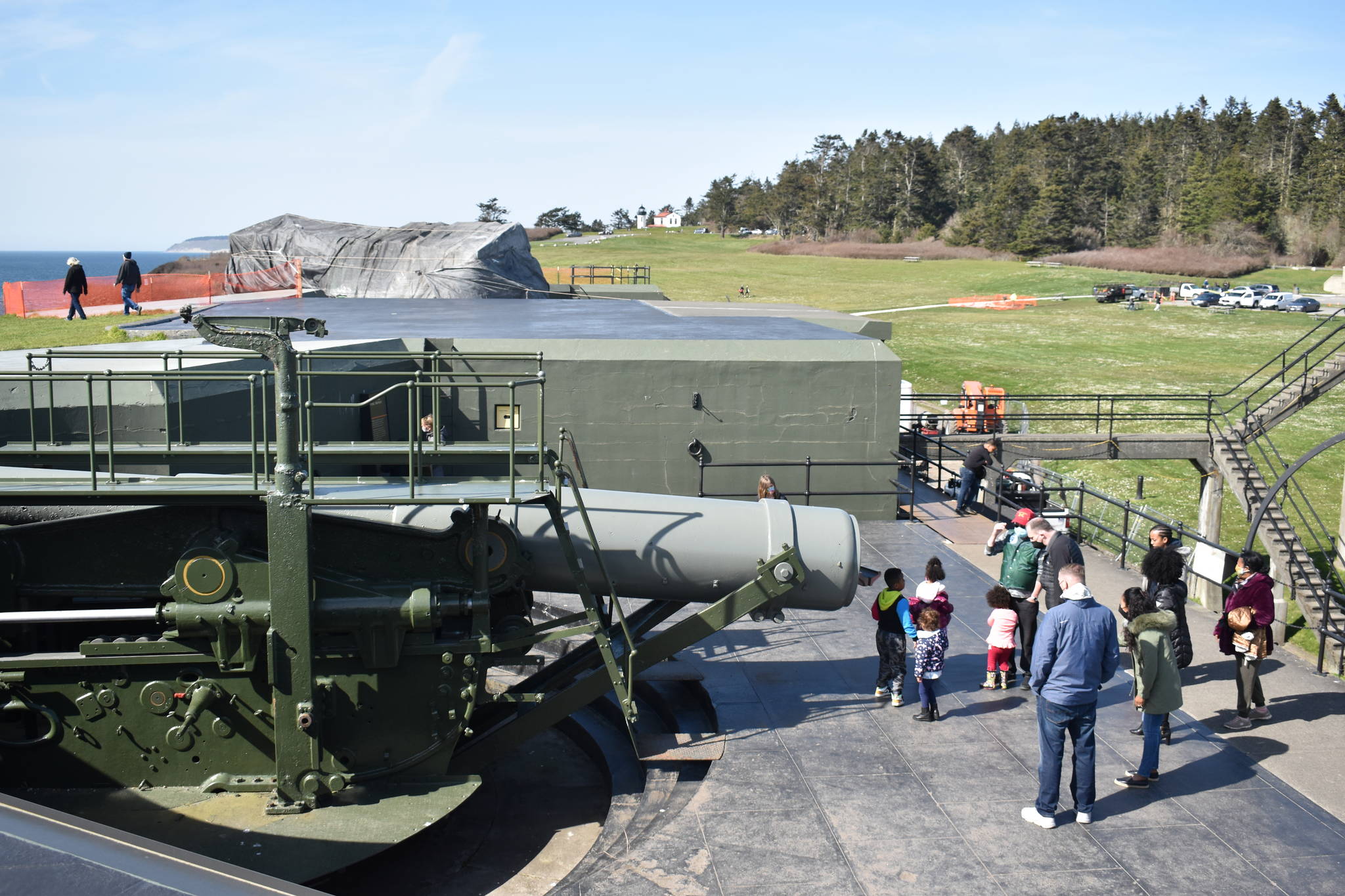The two “Big Guns” at Fort Casey Historical State Park are undergoing a major makeover for the first time since they were brought to Whidbey Island in the 1960s.
Chris Holm, Central Whidbey area manager for Washington State Parks, said that although there have been some touch-up jobs over the years, the guns have not seen a project of this scale before.
“This is actually stripping everything down completely, making sure all the little parts work,” Holm said.
The park received a $145,000 grant from Ebey’s Historical Reserve to pay for the project, Holm explained. The work should be done by Memorial Day weekend.
The guns will be under wraps while they are sandblasted. Holm said the company doing the work has a material that renders inert any lead that may be in the old paint chips. The process and noise level are similar to the restoration work being done on the Deception Pass bridge.
David Anderson is a volunteer who leads tours at the fort and explained the pair are the only 10-inch disappearing guns left in the country.
It took 25 men to fire one of the big guns, Anderson said, and each weighs 125 tons. The bullet alone weighed more than 600 pounds.
“When these guys went overseas in World War II, they were the best coastal artillery they’d ever seen,” Anderson said of Fort Casey soldiers at the time.
The guns currently standing at the state park came from the Philippines and were never actually fired while at the fort, although they are the same model the fort had when it was active in the early 1900s.
“They were so deep in the jungle, no one had seen them for years,” Anderson said.
Fort Casey’s original guns were scrapped for metal during World War II by the government.
Once they were found, the late Washington State Senator Henry “Scoop” Jackson helped secure the guns for Whidbey.
After a harrowing journey that saw one of the guns almost slip over the side and into the waves, they arrived on the island in 1968.



